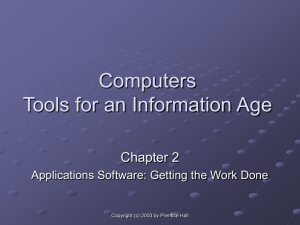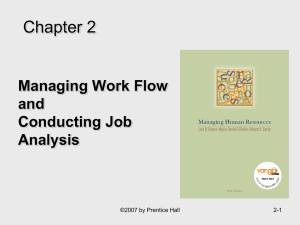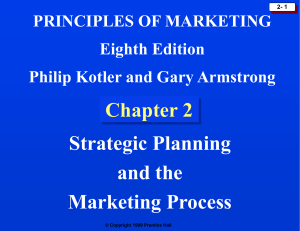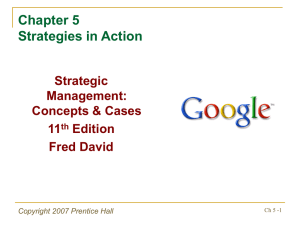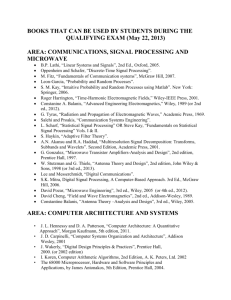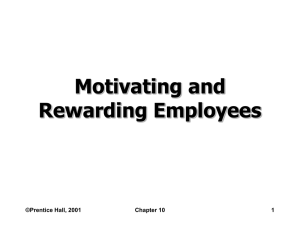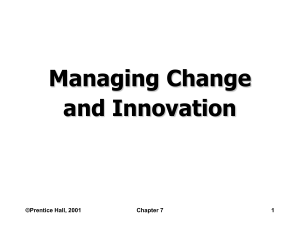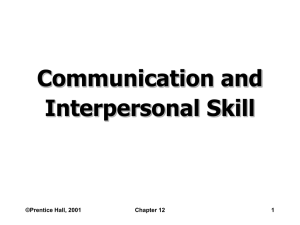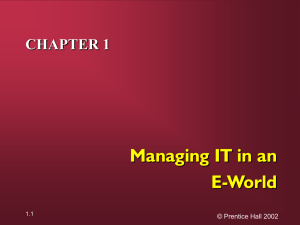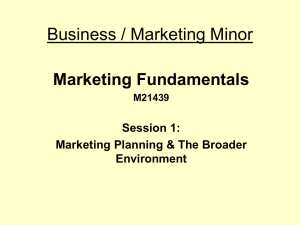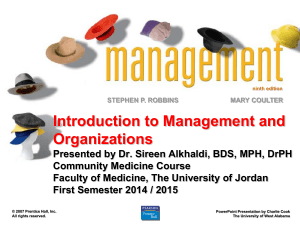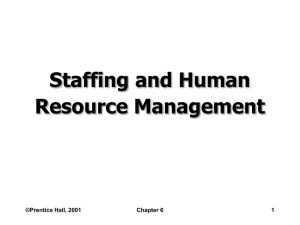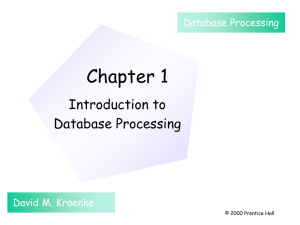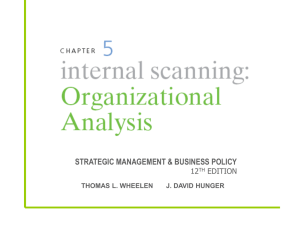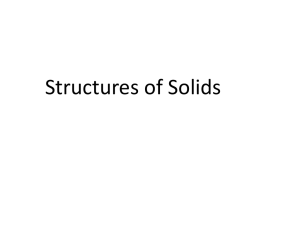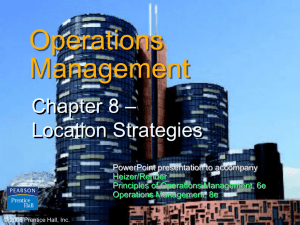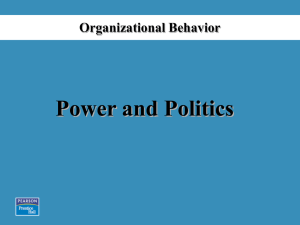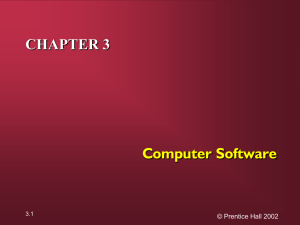Foundations of Control
advertisement
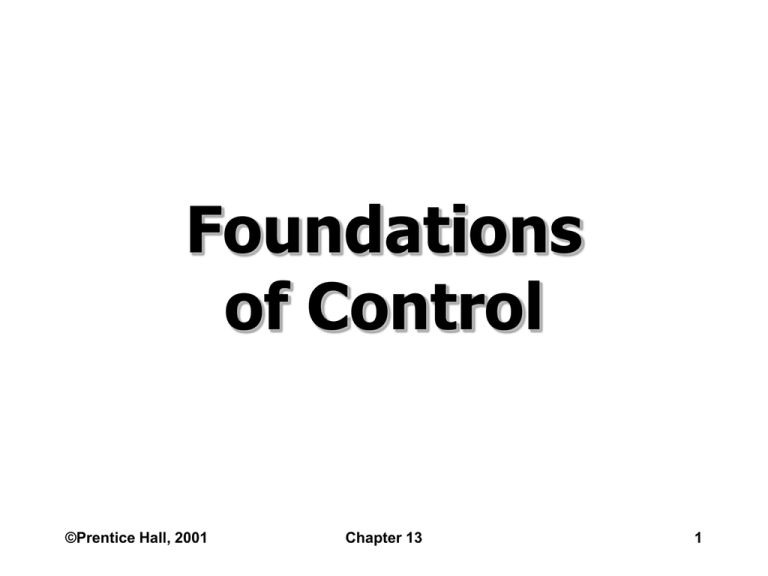
Foundations of Control ©Prentice Hall, 2001 Chapter 13 1 Learning Outcomes • Define control • Describe three approaches to control • Explain why control is important • Define the control process • Analyze the three types of control ©Prentice Hall, 2001 Chapter 13 2 Learning Outcomes • Describe an effective control system • Identify contingency factors in the control process • Learn the dysfunctional side of controls • Describe how national differences affect the control process • Study ethical issues in employee monitoring ©Prentice Hall, 2001 Chapter 13 3 Three Approaches to Control Systems Market Control ©Prentice Hall, 2001 Bureaucratic Control Chapter 13 Clan Control 4 Managerial Decisions in the Control Process Compare Performance to Standard Measure Performance Yes Do Nothing No Variance Acceptable? Objectives Standard Standard Attained? Yes Do Nothing No Standard Acceptable? Yes Identify Causes No Revise Standard ©Prentice Hall, 2001 Chapter 13 Correct Performance 5 Information Operations What Managers Measure Finances ©Prentice Hall, 2001 People Chapter 13 6 Defining an Acceptable Range of Variation Acceptable Upper Limit Acceptable Range of Variation Standard Acceptable Lower Limit t ©Prentice Hall, 2001 t+1 t+2 t+3 Chapter 13 t+4 t+5 7 Mid-Western Distributors’ Sales for July (in hundreds of cases) Brand Standard Heineken 1,075 913 (162) Molson 630 634 4 Beck’s 800 912 112 Moosehead 620 622 2 Labatt’s 540 672 132 Corona 160 140 (20) Amstel Light 225 220 (5) 80 65 (15) 170 286 116 4,300 4,464 164 Dos Equis Tecate Total Cases ©Prentice Hall, 2001 Actual Chapter 13 Over (Under) 8 Do Nothing Taking Managerial Action Correct Performance Revise the Standard ©Prentice Hall, 2001 Chapter 13 9 Three Types of Control Input Processes Output Feedforward Control Concurrent Control Feedback Control Anticipates Problems Corrects Problems as They Happen Corrects Problems after They Occur ©Prentice Hall, 2001 Chapter 13 10 Qualities of an Effective Control System • Accuracy • Timeliness • Economy • Flexibility • Understandability ©Prentice Hall, 2001 Chapter 13 11 Qualities of an Effective Control System • Reasonable criteria • Emphasis on exceptions • Strategic placement • Multiple criteria • Corrective action ©Prentice Hall, 2001 Chapter 13 12 Contingency Factors in Control Systems Contingency Variable Organization Size Position and Level Degree of Decentralization Organizational Culture Importance of an Activity ©Prentice Hall, 2001 Control Recommendations Small Informal, personal management Large Formal, personal management High Many complex criteria Low Few, easy-to-measure criteria High Increased number of controls Low Reduced number of controls Open Informal, self-control Closed Formal, external controls High Elaborate, comprehensive controls Low Loose, informal controls Chapter 13 13 Adjusting Controls for National Differences Distance and the Formality of Controls ©Prentice Hall, 2001 Technology and the Comparability of Data Chapter 13 14 Dysfunctional Controls Inflexible Controls ©Prentice Hall, 2001 Unreasonable Standards Chapter 13 15 Ethical Issues and Control Inform Employees Have a Written Policy Questions of Privacy ©Prentice Hall, 2001 Monitor for Business Reasons Chapter 13 16
